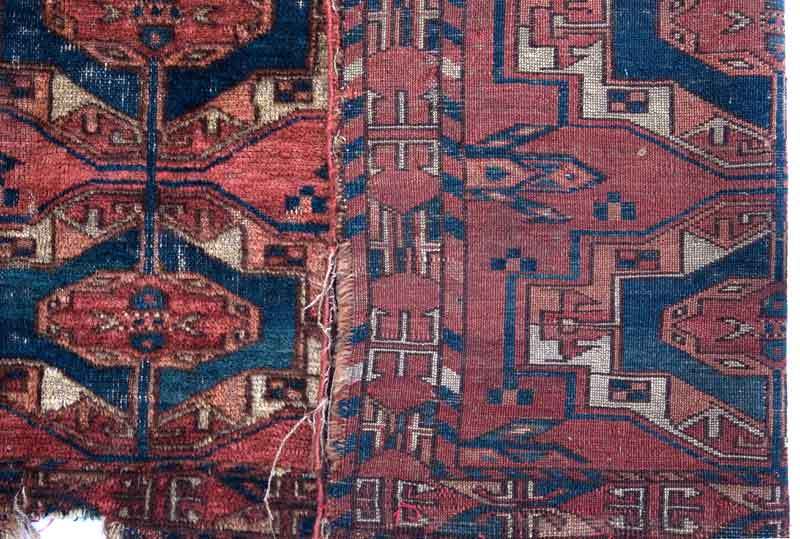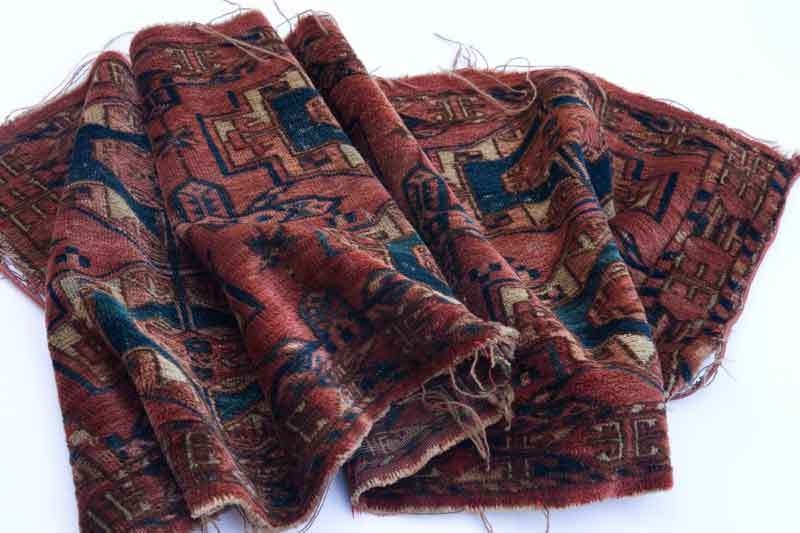Hi Steve
I wouldn’t say there is much
colour difference between front and back on the piece (the extreme
close-up I posted earlier in this tread was taken in bad lightning, and
the colours are way off)
As I am sure you all know
photographing rugs is rather difficult. It’s hard to capture the colours,
and of course even harder to capture the feel and texture.
Here are 2
shots taken in sRGB colour space, they are perhaps a bit too saturated
(hope you can imaging something in-between these shots and the first I
posted)


I have 5 other Tekke Torbas which would conventional be
dated as pre-Russian, one was discussed here
http://www.turkotek.com/misc_00091/torba.htm (and I have
a few other Turkmen Torbas which are post-Russian). The texture and feel
of the Torba in this tread is extremely fine, thin, soft and shinny.
Nothing like my other pieces, or anything Turkmen I have been close to.
Even if this Torba should turn out to be mid-19th (which I of course
certainly don’t think it to be

) I sure think it’s an exceptional piece. Well enough bragging

We all love our rugs, and I suppose we are all here to learn and
share. I still hope more material regarding the border, or otherwise
comparative material, will be posted.
Regards & Merry
Christmas
Martin
(late edit : I may have been a bit to
optimistic regarding my other Tekke bags. I suppose the correct
conventional dating would be "last quarter 19th" or perhaps "last half
19th" all of course very uncertain)